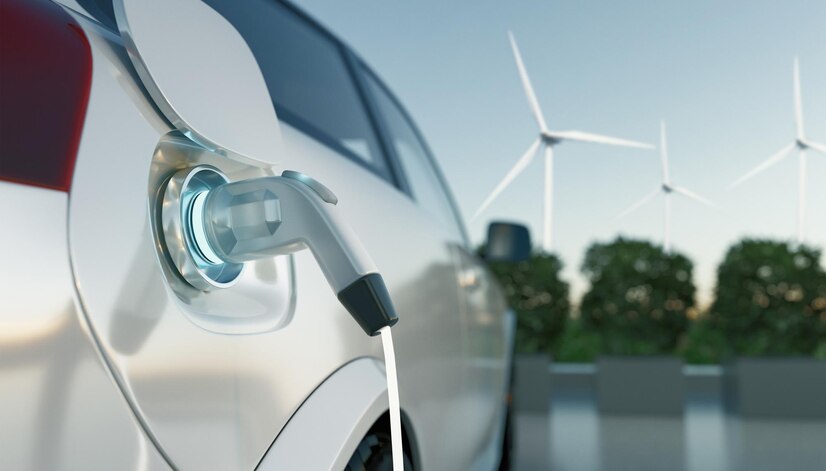
Rukaiya khalid
Africa’s trajectory approach towards decarbonizing it’s transport systems.
Most Read Stories Today
-
Water Scarcity and Artificial Rainfall: The Positive and The Negative Effects of Cloud Seeding, including Health Hazards and Climate Implications.
-
Renewable Energy in Rural Areas: Challenges, Opportunities, and Successful Rural Projects
-
Pakistan's Agriculture at Risk Due to Climate Variability
-
South Africa's Recent Floods: Is Climate Change to Blame?
-
South Korea's floods: root causes and prevention strategies.
-
South Africa: Cape Town, A City Under Fire
-
The Human Cost of Climate Disasters
-
Our Oceans, Our Future: The South African Dilemma of Overfishing
-
Degenerative Impact of Hydrocarbons On The Environment.
-
Sustainable Urban Planning - Copenhagen and the Path to Climate Resilience
Africa might be a resource-rich continent from expanse of forests, Savannah grasslands, to nutrient-rich lakes and rivers; as well as ocean-diverse fish species; however, it suffers disproportionately to climate change impact more than other continents.
The impacts might not exist in isolation, but the efforts and strides in combating and minimizing its detrimental effect needs to be highlighted. Its impacts have not only caused a knock on Africa’s economy but has potentially caused additional challenge to the prospects of mainstay economic sectors. With accrued climate/weather variations and frequency, Africa has been compelled to wake up from its daytime sleep by making quick turnarounds in combating climate change by limiting global warming to a manageable increase.
The scaled up efforts vary from; decarbonizing transport and energy systems, instigating nature-positive and climate-sensitive sustainable agricultural practices, sound strategies to foster health and nutrition by strengthening climate-resilience, proposing adoption plans to strengthen climate resilience within vulnerable groups that increase their capacity to cope with climate-induced impacts i.e. drought and floods.
With energy transformative agendas like the Paris Agreement, which aims to help countries make just transitions by decarbonizing its energy systems to more sustainable nature-positive alternatives. Most African countries are making pivotal shifts towards renewable energy consumption, with Kenya and South Africa clinching the top positions, often touted as the top countries making huge sustainable transitions within this sector.
Carbon emissions are huge contributors and drivers to climate change and this has been stemmed by a couple of key factors and contributors i.e. increase in industrialization, a surge in automobile utilization, land encroachment and fragmentation, as well as deforestation.
Africa’s population is increasing exponentially to unprecedented rates and causing a strain in the mobility sector to meet the mobility demand, with its utilization not only festering the climate crisis but also undermining the efforts of scientists, climate researchers and activists.
This has made an urgent call for key parties to make a fundamental shift towards driving a sustainable transportation revolution, by creating resilient infrastructure systems thus becoming carbon-free and achieving the carbon net-zero as outlined in the Paris Agreement. Amid the ongoing climate change summit held in Nairobi, Kenya, the summit is a collective event anchoring economic circularity and the crucial effort of transitioning the African economy to a thriving green economy.
The summit aims to address and magnify key contributors to climate change and key element sectors that require urgent action. ACW (Africa Climate Week) 2023 organised by UNFCCC, UNDP, UNEP and World Bank, is designed into four systems-based tracks, each focusing on specific themes:
- Energy systems and industry,
- Cities, urban and rural settlements, infrastructure and transport,
- Land, ocean, food, and water,
- Societies, health, livelihoods, and economies
Comprising about 17 percent of the world’s population, Africa contributes just 4 percent of global carbon emissions at 1.45 billion. Of this volume, South Africa earning a top position with 435.9 Million Tonnes (7.34 Metric per capita) followed by Libya 74.5 Million Tonnes (11.6 metric per capita), Algeria with 176.3 million tonnes (3.99 Metric per Capita), and Tunisia with 31.6 Million Tonnes (2.58 Metric per Capita).
The others are Egypt with 249.6 million tonnes (2.28 Metric per Capita), Morocco with 17.6 Million Tonnes (1.9 Metric per Capita) while Nigeria, Ghana, Sudan, and Kenya tailing with the lowest carbon footprint input of 0.65, 0.64, 0.62, 0.46, 0.44 Metric per Capita respectively. Kenya’s transport sector contributing 37.7% in its annual emissions. Dwarfed by other giant world leading carbon emittors, China tops the list at 11.47 billion tonnes, making it the world’s largest polluter, followed by the United States (5 billion tonnes), India (2.7 billion tonnes), Russia (1.75 billion tonnes) and Japan (1.07 billion tonnes).
Kenya is noted to make lightning-fast shifts towards decarbonising its transport sector, with the government purchasing two roam rapid electric buses to act as prototypes. The Swedish-Kenyan manufacturer aims to monopolise the Kenyan mass transport sector by adding a fleet of 100 electric buses by the end of 2023 and 1000 by the end of 2025.
Achieving a carbon-free transport sector and a resilient infrastructure system requires a sound but yet fluid and dynamic sustainable interventions. But what are these potent pathways that will aid drive these initiatives to meet its aggressive sustainable transformative plans.
- Invest in E-mobility solutions as an alternative means for both public and private transportation.
- Invest in sustainable fuels for all types of mobilities (vehicles, trains, and aeroplanes)
- Green and design-sustainable cities to help reduce carbon footprint, which will consequently help cool cities from heat waves due to climate change.
- Better city design that allow children to walk conveniently to school.
Achieving a carbon net-zero is a colossal task and might seem an impossible goal to achieve, but all requires discipline and unwavering commitment from active parties and contributors to climate change (the public, private sector and the government). Such shifts not only aid create a robust green economy but opens and soars green opportunity streams through projects employing many youths passionate about climate advocacy and environmental stewardship, thus growing the green job market.

Terms & Conditions
Subscribe
Report
My comments